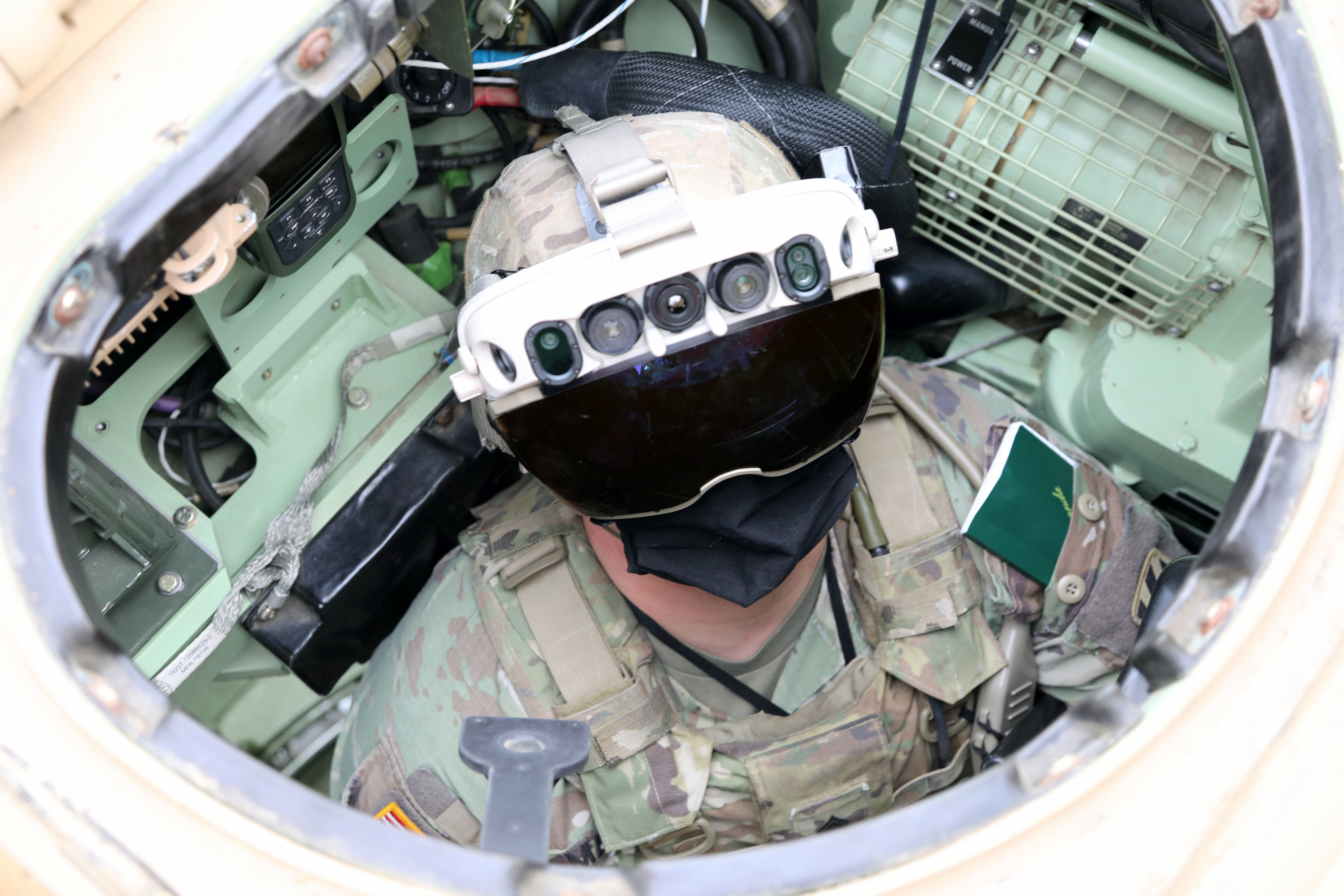WASHINGTON — Slashes made to U.S. Army Integrated Visual Augmentation System funding were fair and the right thing to do considering the challenges the program has faced, according to the service’s acquisition and technology chief.
“I think the congressional reductions are, frankly, just good oversight by Congress,” Assistant Secretary of the Army for Acquisition, Logistics and Technology Doug Bush said during a March 25 Defense News event. “I believe the funding profile we had for the program assumed, kind of, almost effortless progress to full production.”
The futuristic gear is supposed to transform how soldiers train, consume information and fight. The headset combines, among other things, augmented reality, navigation and smart crosshairs, delivering what Army Chief of Staff Gen. James McConville on March 9 described as not just “a better night vision goggle.”
“It’s going to give a much greater capability to our troops,” McConville said.
Lawmakers earlier this year froze some $350 million in procurement money until initial IVAS testing and evaluation are completed and Congress is updated on the project’s progress, fiscal year 2022 budget legislation shows.
This isn’t the first time Congress has docked the program, and in October 2021 the Department of Defense inspector general announced a probe, seeking to determine whether IVAS units “meet capability requirements and user needs.”
Ongoing trials with the do-it-all goggle and a full-fledged test in May will “tell us a lot,” Bush said. “I’m cautiously optimistic.” But, he continued, “we have to prove out that the system can do what we want in order to go to really full-rate production with our industry partner.”
The Army awarded Microsoft a multibillion-dollar contract for the IVAS — effectively a military version of the software giant’s HoloLens — in March 2021, marking a move into production and fielding.
Problems, though, often emerge at the intersection of cutting-edge tech and real-world use; integrating “new technologies into something that is hardened for combat” is no small task, said Bush.
“I think in that case, we’re ending up on a reasonable production ramp that matches the pace of the technology maturing,” he said. “So, I’m not too worried about it.”
Army executives late last year said IVAS fixes “will require a little more time” but emphasized the program was years ahead of traditional acquisition schedules. McConville earlier this month said the interesting thing about IVAS is the speed of its improvements.
“Calculated risk and time for adjustment have been baked into our processes, and are vital to rapid Army modernization practices,” an October 2021 joint statement explained.
Bush on March 25 made a similar point: “It’s not completely surprising that we hit some bumps. But I think we’re learning from those, and applying those lessons to other programs, so we can use the new authority to go faster, but at the same time manage the risk appropriately.”
Colin Demarest was a reporter at C4ISRNET, where he covered military networks, cyber and IT. Colin had previously covered the Department of Energy and its National Nuclear Security Administration — namely Cold War cleanup and nuclear weapons development — for a daily newspaper in South Carolina. Colin is also an award-winning photographer.




